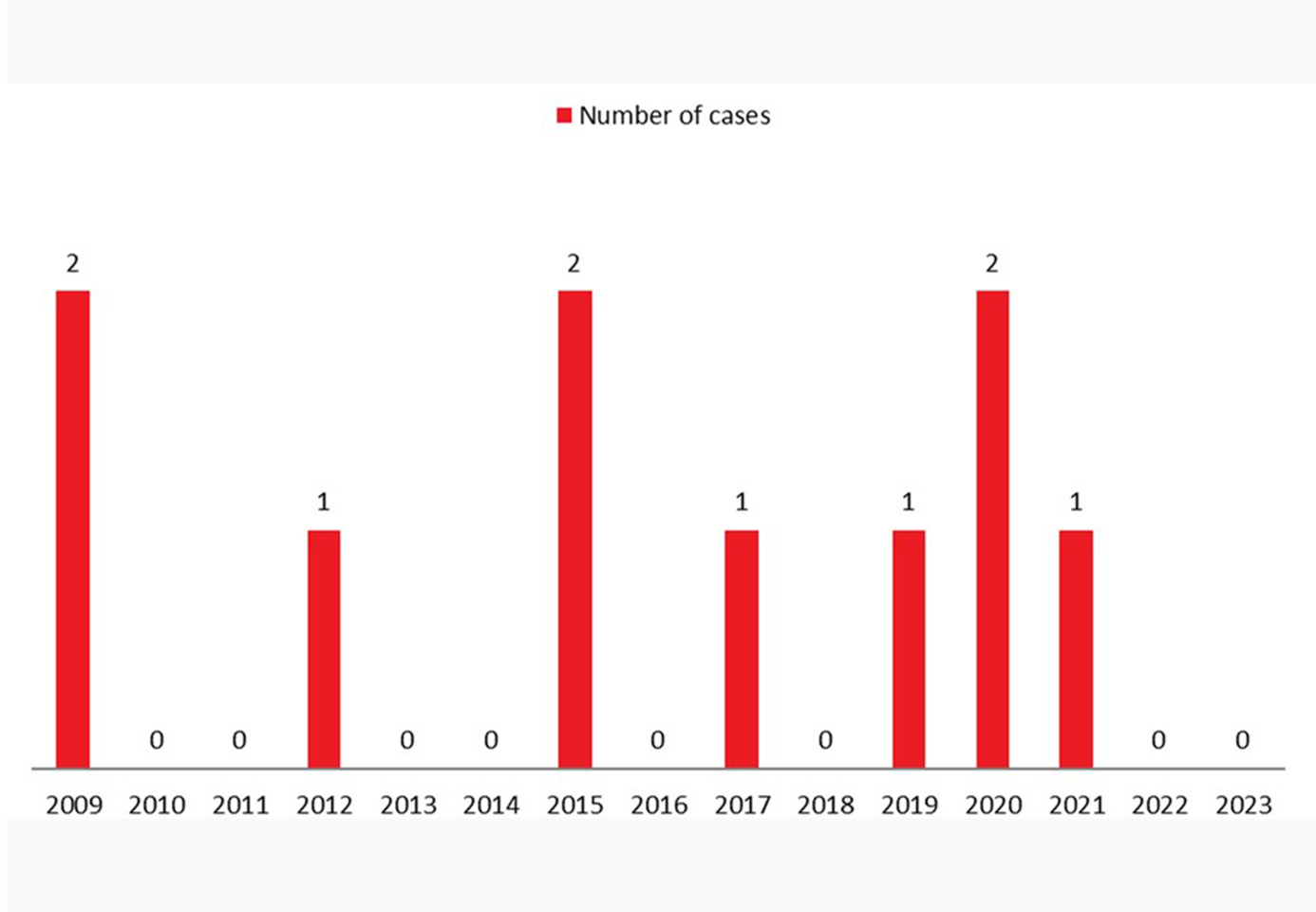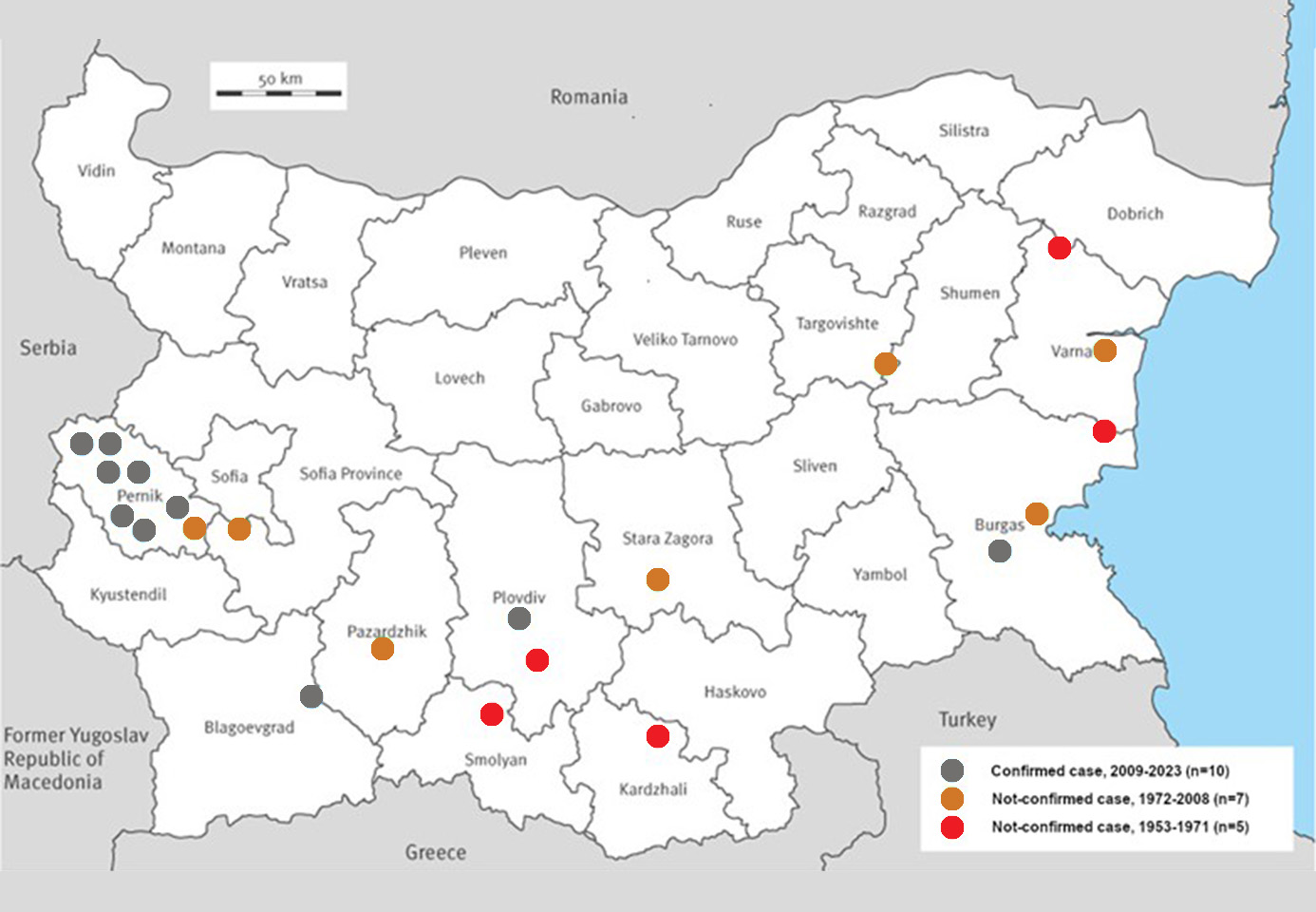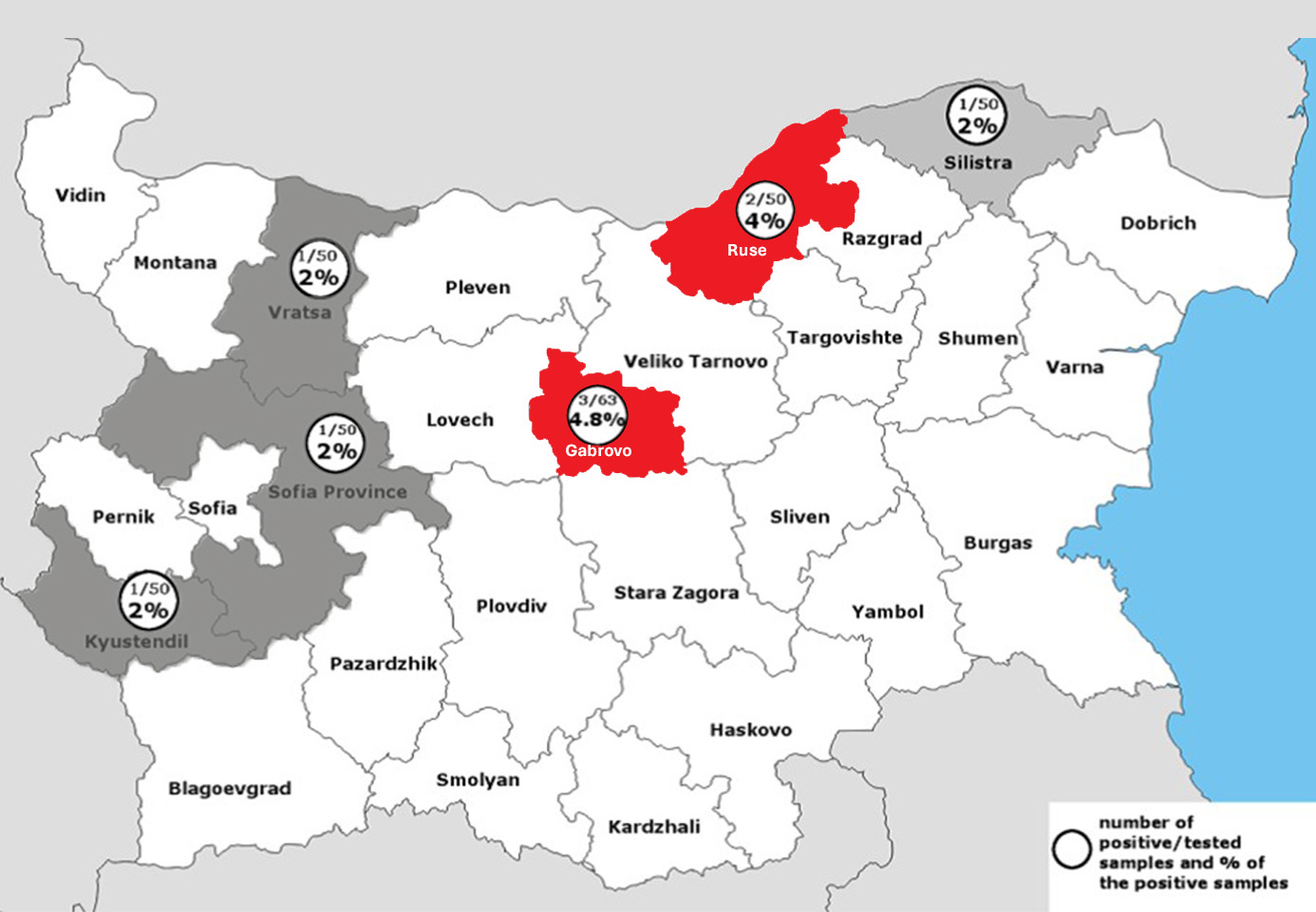Iva Christova
E-CDC risk status: endemic
(lack of consistent testing and reporting, data as of end 2023)
History and current situation
First cases of probable tick-borne encephalitis (TBE) were reported in 1961 by Andonov et al. in eastern regions of Bulgaria.1 Possible TBE cases with the typical two-wave fever, originating from consumption of raw goat milk, were described back in 1953 by Vaptzarov et al. in southern Bulgaria.2 Investigations in the 1960s were able to isolate 3 tick-borne encephalitis virus (TBEV) strains from Haemaphysalis punctata and 1 from Dermacentor marginatus ticks from goats and sheep in the district of Plovdiv.3 The antigenic properties of these 4 virus strains were identical to the highly virulent strain “Hypr” of the European subtype of TBEV (TBEV-EU).3
Laboratory diagnosis of TBE, based on serology using complement fixation assay, was introduced in Bulgaria in the 1970s. Since then single case reports of presumed TBE have been reported, but these lack reliable microbiological confirmation.4-5 However, investigations of ticks between 1974 and 2002 detected TBEV in ticks in Bulgaria. A total of 6849 ticks were investigated, and 8 TBEV strains were isolated.6
Beginning in 2009, the National Reference Laboratory of Vector-Borne Pathogens introduced reliable laboratory diagnosis methods for TBE, based on polymerase chain reaction (PCR) and enzyme-linked immunosorbent assay (ELISA), and identified the first 3 confirmed TBE cases in Bulgaria: 2 cases in 2009 and 1 case in 2012.7 Two more TBE cases were identified in 2015, one case was reported in 2017, one case in 2019, two cases in 2020 and one in 2021 (Fig. 1). Most of the cases reported in the last few years originate from a focus in Western Bulgaria close to the capital city (Fig. 3).
Nationwide seroprevalence survey on circulation of TBE virus in Bulgaria found an overall seroprevalence of 0.6% (Fig. 4). However, district analysis showed TBEV seroprevalence to be up to 4.0%–4.8%, indicating that the TBEV infection seems to be more widespread in the country than previously described.8-10
Though TBE cases are reported sporadically, TBEV circulates in Bulgaria, causing human cases, associated with either tick bites or consumption of unpasteurized milk.
Overview of TBE in Bulgaria
Figure 1: TBE case numbers in Bulgaria over time (confirmed cases only)

Click the image above to enlarge
| Year | Number of Cases | Incidence / 10 5 |
|---|---|---|
| 2009 | 2 | n.c. |
| 2010 | 0 | n.c. |
| 2011 | 0 | n.c. |
| 2012 | 1 | n.c. |
| 2013 | 0 | n.c. |
| 2014 | 0 | n.c. |
| 2015 | 2 | n.c. |
| 2016 | 0 | n.c. |
| 2017 | 1 | n.c. |
| 2018 | 0 | n.c. |
| 2019 | 1 | n.c. |
| 2020 | 2 | n.c. |
| 2021 | 1 | n.c. |
| 2022 | 0 | n.c. |
| 2023 | 0 | n.c. |
Age and gender distribution of TBE in Bulgaria
Contact
Iva Christova
iva_christova@ncipd.org
Author
Citation
Christova I. TBE in Bulgaria. Chapter 13. In: Dobler G, Erber W, Bröker M, Chitimia-Dobler L, Schmitt HJ, eds. The TBE Book. 7th ed. Singapore: Global Health Press; 2024. doi:10.33442/26613980_13-5-7
References
- Andonov P, Rusakiev M, Hristova T. Natural outbreak of TBE in Eastern Balkan mountain. Hygiena. 1961;6:23-26.
- Vaptzarov I, Turpomanov A, Spasov Z, Nikov D, Dragiev M. Recurrent viral meningitis in South Bulgaria. Suvr Med (Sofiia). 1954;5(2):86-103.
- Pavlov P, Daniel M, Georgriev B, et al. The natural focus of tick-borne encephalitis of sheep and man in the Rhodope mountains (Bulgaria). Folia Parasitol (Praha). 1972;19(1):33-40.
- Georgiev B, Rosický B, Pavlov P, Daniel M, Arnaudov D. The ticks of the natural focus of tick-borne encephalitis of sheep and man in the Rhodope Mountains (Bulgaria). Folia Parasitol (Praha). 1971;18(3):267-73.
- Kaneva Z. Infectious diseases. Sofia: Znanie; 2006, pp. 261-2.
- Dikov I, Gacheva N, Kamarinchev B. Tick-borne encephalitis.In: Serbezov V, Kalvatchev Z, editors. Arboviral infections. Sofia: Iztok-Zapad Ltd; 2005, pp. 92-106.
- Mohareb E, Christova I, Soliman R, Younan R, Kantardjiev T. Tick-borne encephalitis in Bulgaria, 2009 to 2012. Euro Surveill. 2013;18(46). pii:20635.
- Christova I, Panayotova E, Tchakarova S, Taseva E, Trifonova I, Gladnishka T. A nationwide seroprevalence screening for West Nile virus and Tick-borne encephalitis virus in the population of Bulgaria. J Med Virol. 2017;89(10):1875-1878. doi:10.1002/jmv.24855
- Taseva E, Christova I, Panayotova E, Ilieva D, Pavlova V. Is there an outbreak of tick-borne encephalitis in Pernik district, Bulgaria? Four cases registered for a period of four years – clinical manifestations and epidemiological relations. Probl Infect Parasit Dis. 2021, 49(1): 19-25. doi: 10.58395/pipd.v49i1.57
- Panayotova E, Christova I, Tchakarova S, Taseva E, Trifonova I, Gladnishka T. Seroprevalence of Tick-borne encephalitis virus in domestic animals in Bulgaria. Probl Infect Parasit Dis. 2017, 45(1):28-30.

